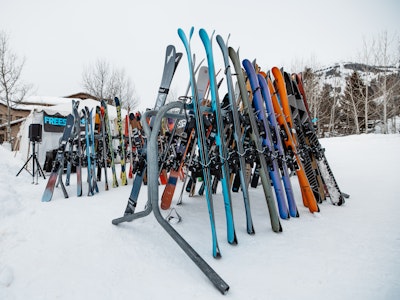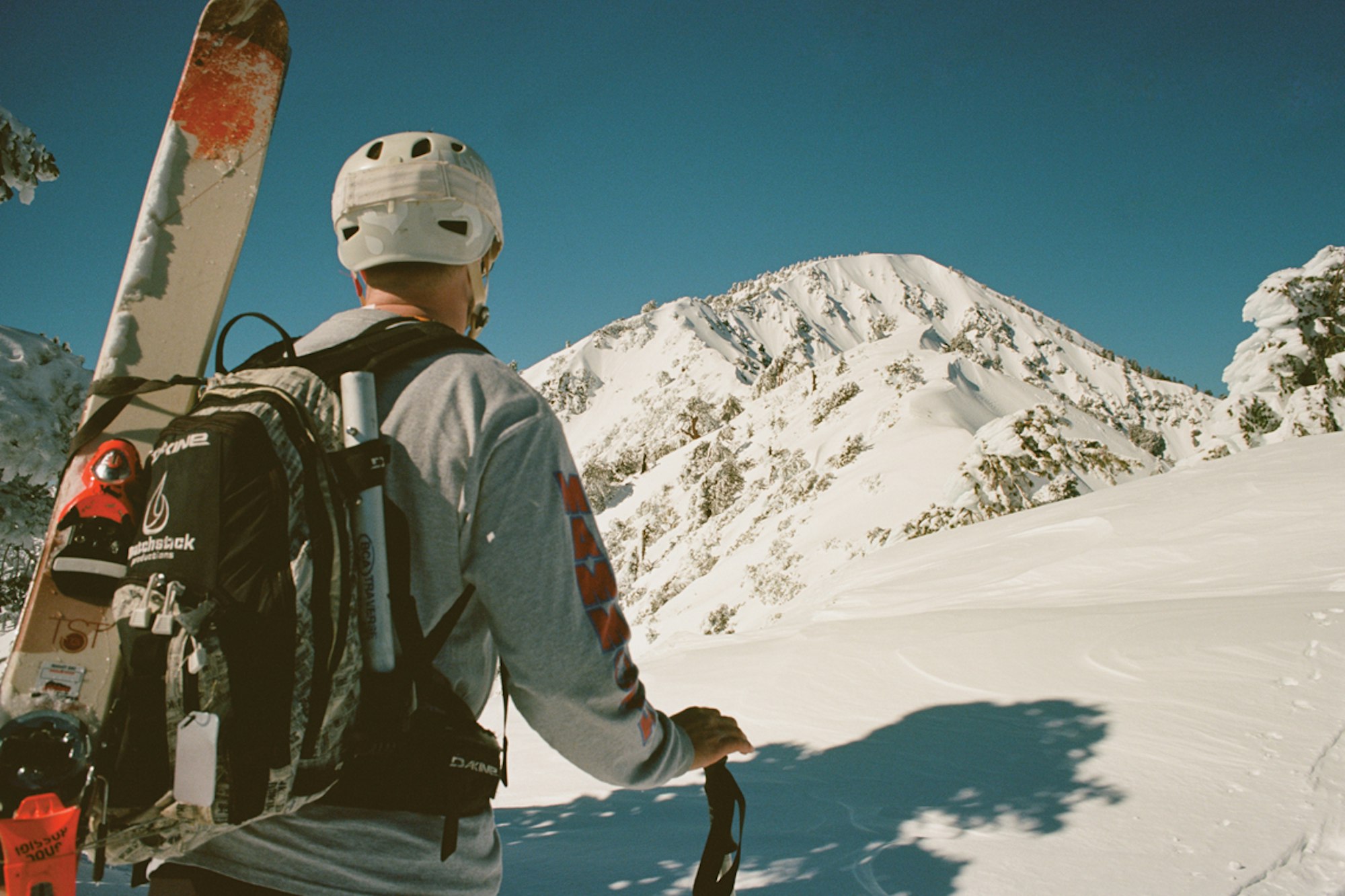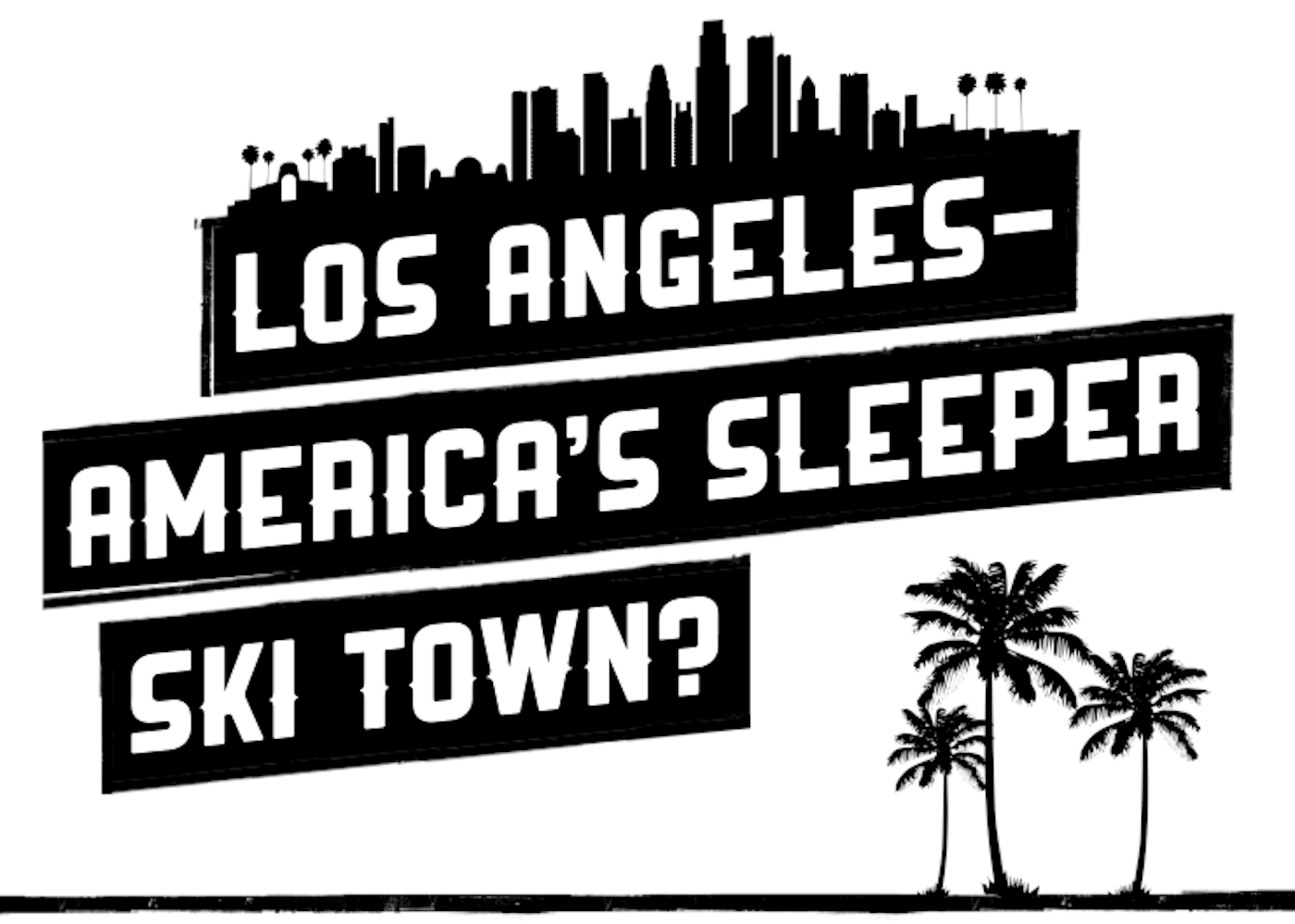
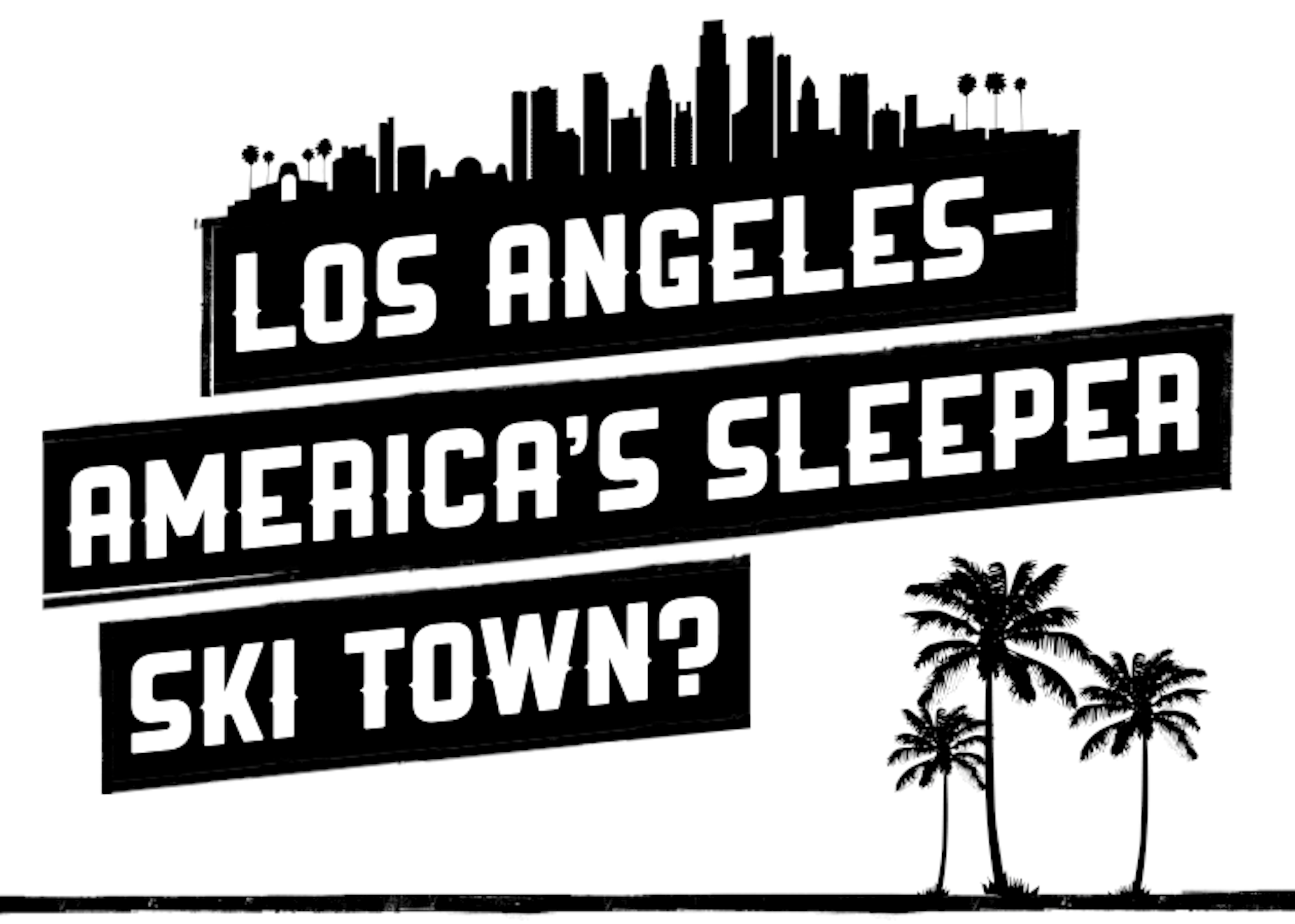
THE DO’S AND DON’TS OF BACKCOUNTRY SHREDDING ABOVE THE CITY OF ANGELS
WORDS ■ Christian Sander // PHOTOS ■ Colin Sander
Los Angeles County has 10.2 million residents and at least a dozen of them ski. The rest seem oblivious to the snow-capped mountains just east of the downtown skyline.
My brother and I had just skied one of these nearby mountains: 10,834-foot San Jacinto Peak—unique because of its staggering prominence; the north face climbs over 10,000 feet in under 7 miles, making it the sixth most prominent peak in the lower 48. That colossal vertical climb is alleviated by the Palm Springs Aerial Tramway, which carries passengers from the high alpine down to the Coachella Valley below. We had used it to download. Our ski boots clunked past people clad in Tommy Bahama shirts, flip-flops and fannypacks. It was 70 degrees Fahrenheit, and we were sweating.
A family stopped and stared as the mother said, “Are those skis?”
Obviously, you’re not a golfer, I thought to myself, à la Lebowski.
“…I mean, you can ski up here?” the mom continued.
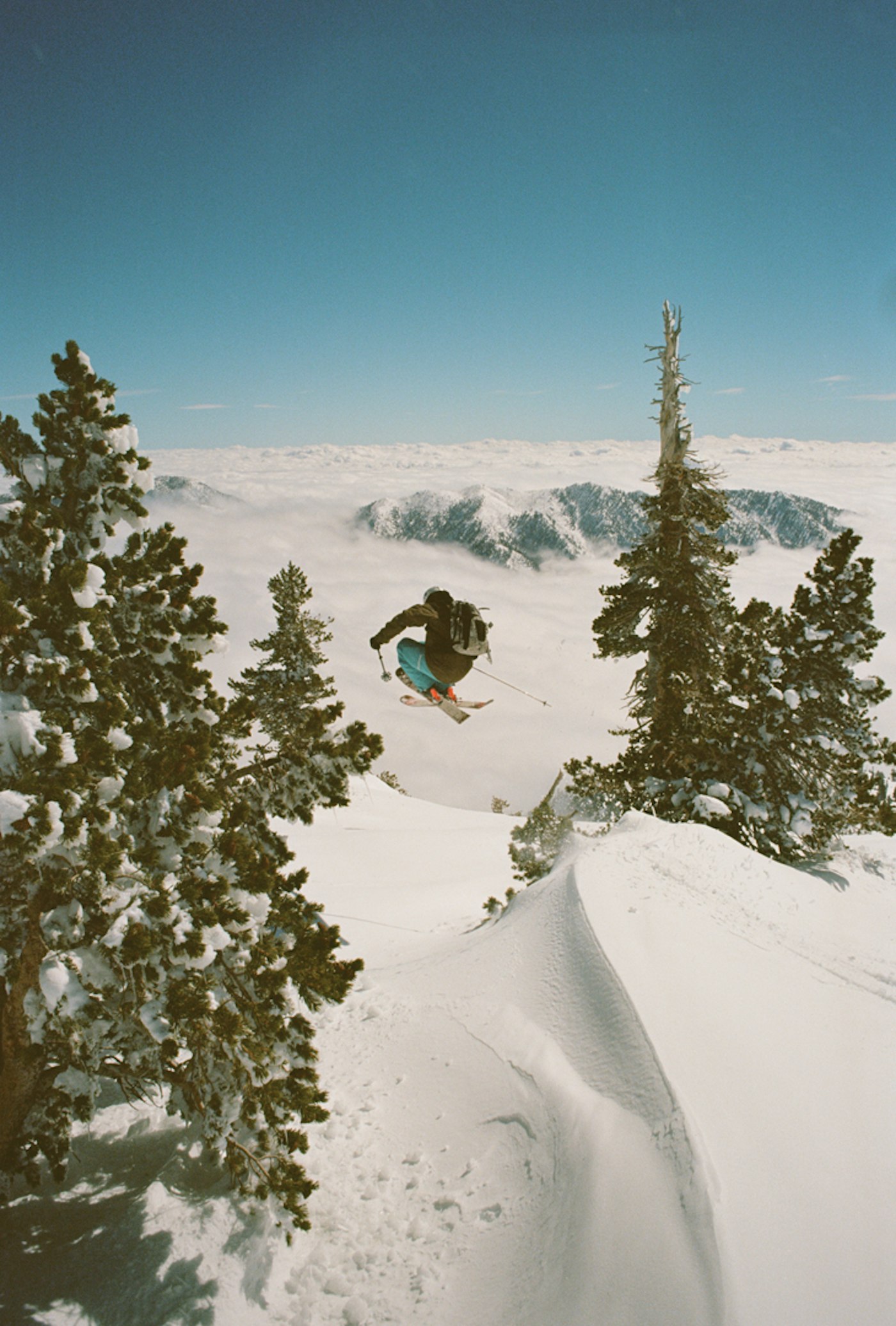
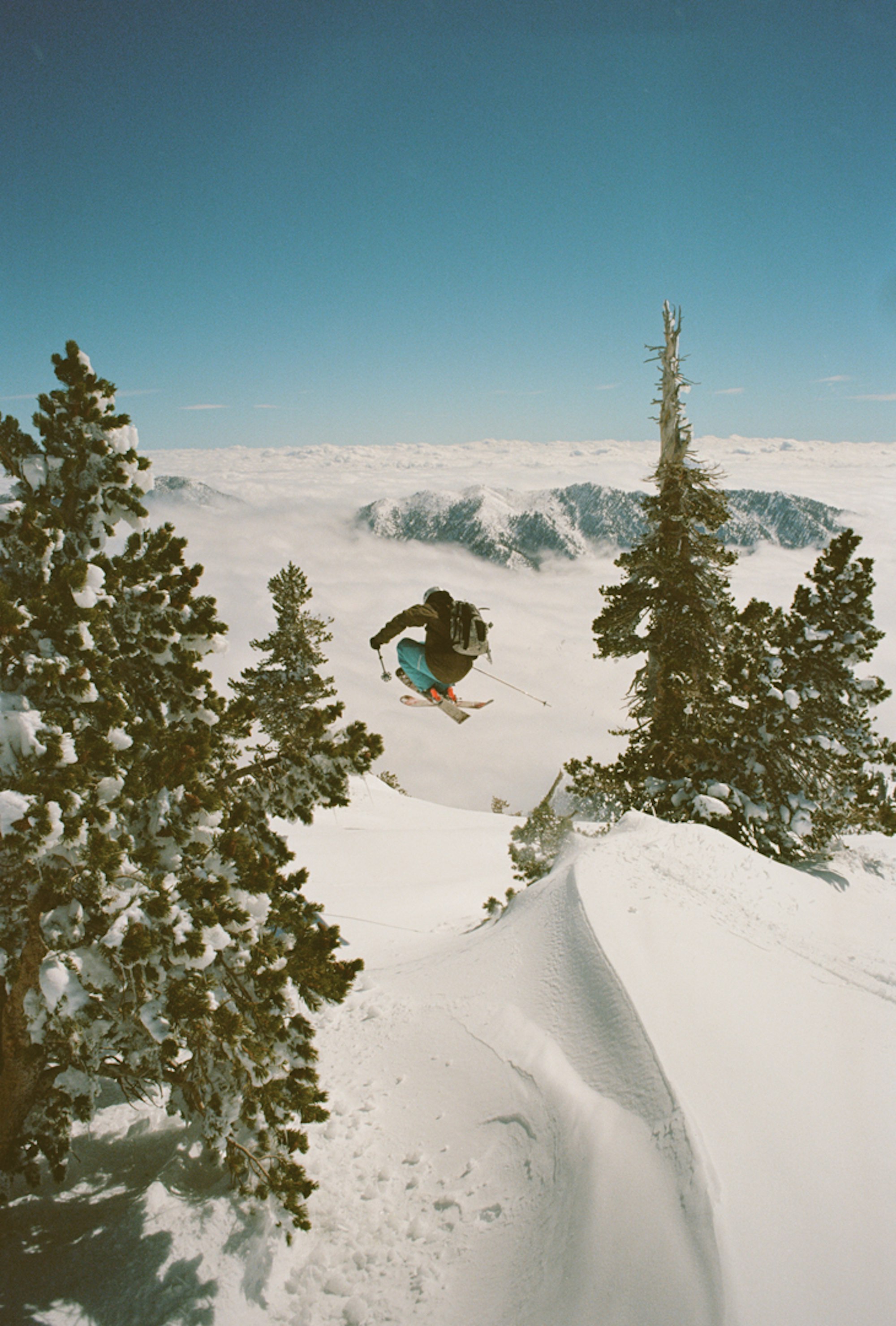
Heck yeah, you can go skiing up here! Above, Cheech Sanders hops a wind lip in the Mt. Baldy backcountry.
I turned and pointed to the obvious 2,000-plus feet of snow-covered vert that we had just descended and explained that, “Yes,” one can ski here. The exchange solidified a belief that I already held: LA is the best-kept-secret ski town in America. People tend to move to this famed metropolis to become actors, or vegans, but never to ski.
For those who don’t live in Los Angeles, the city often conjures images of palm tree-lined boulevards, celebrities and red carpets. For those who do live in Los Angeles, the city conjures images of traffic, smog and yoga pants. For me, the city inspires visions of three accessible mountain ranges all jutting above 10,000 feet. And not only do those mountains offer options for skiing, they also serve up legitimate big-mountain backcountry lines—at least when conditions allow. Yeah, these mountains can be dryer than a camel’s urethra, but when it does snow, it’s on.
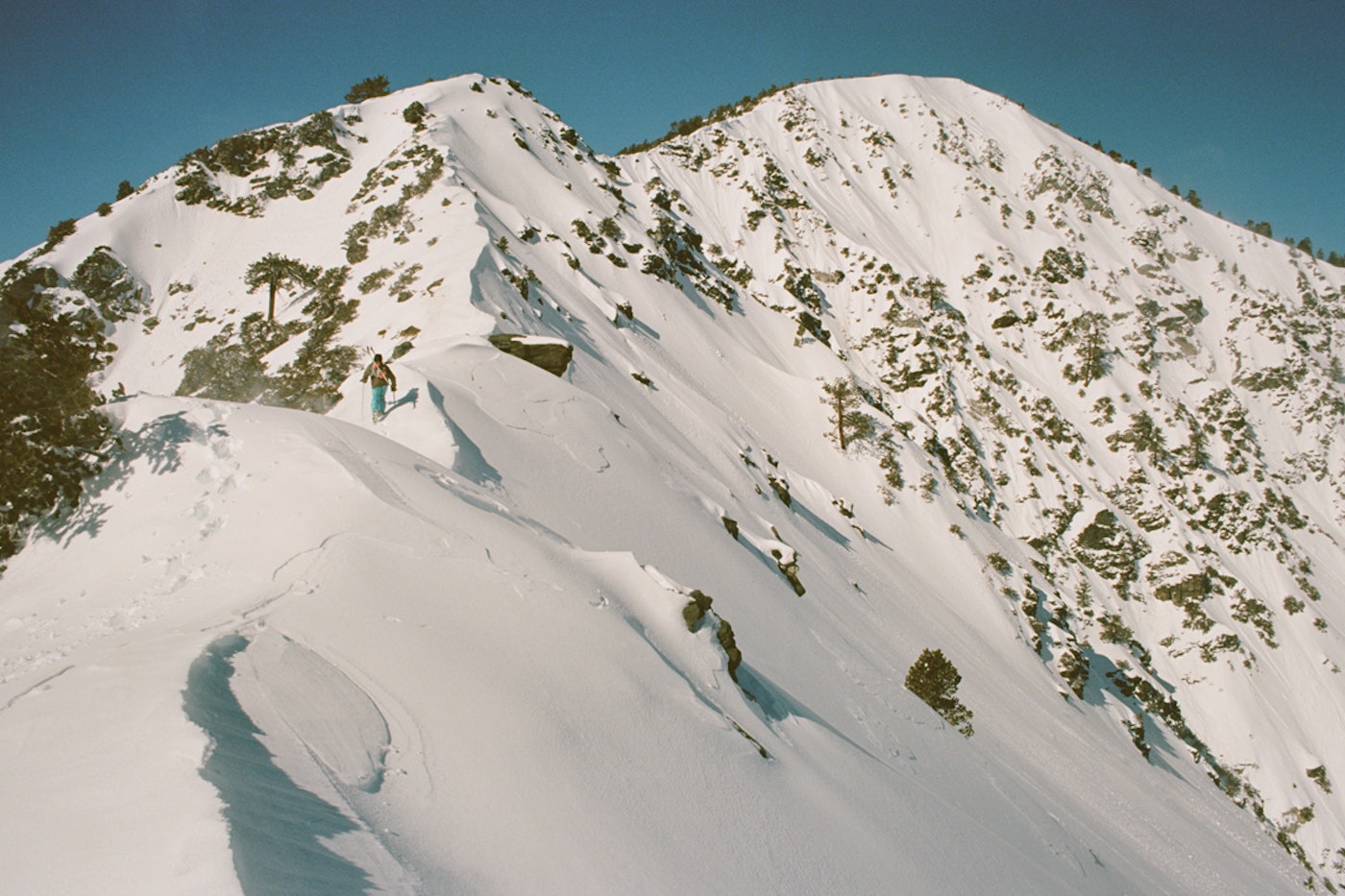
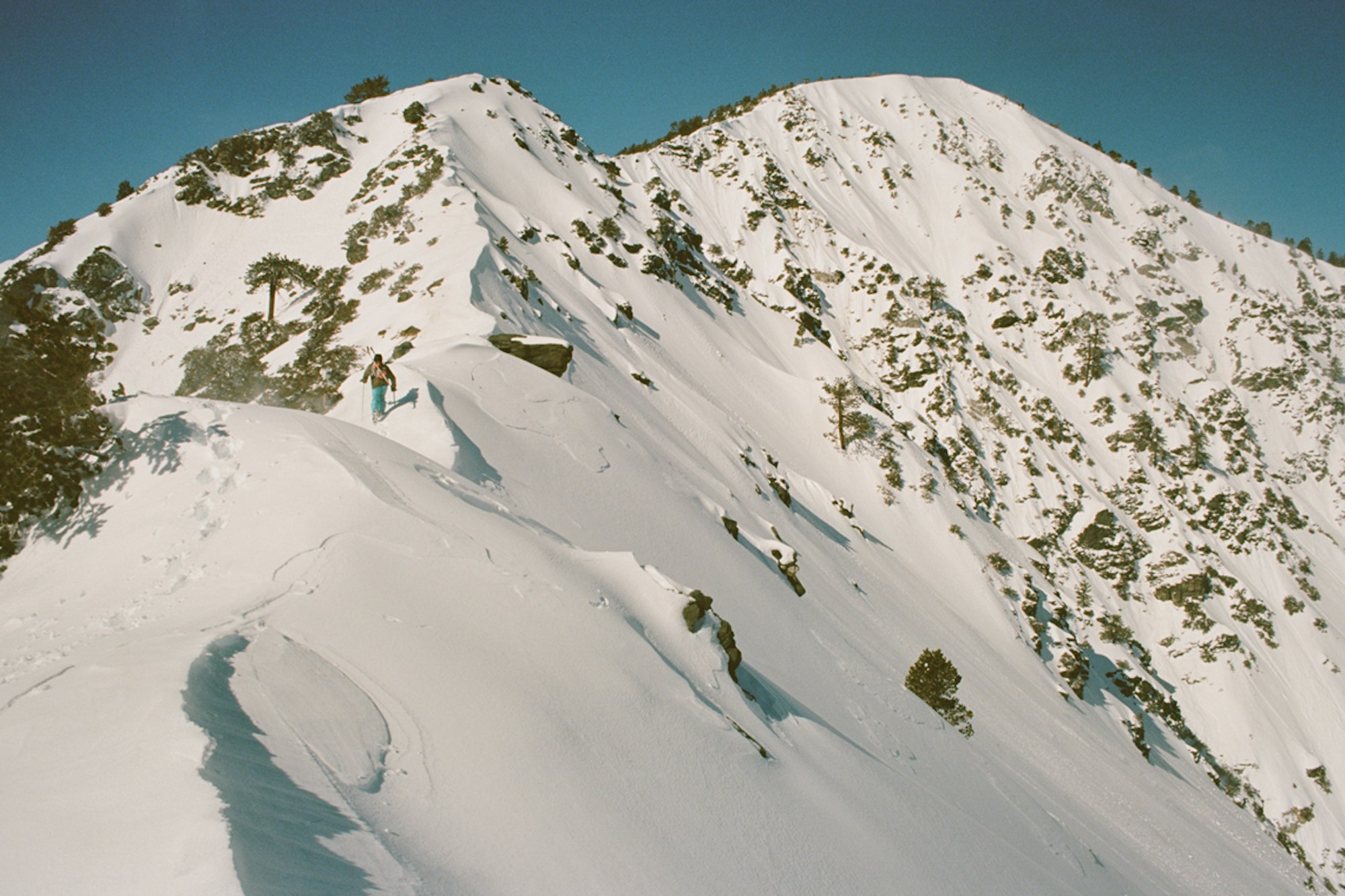
Los Angeles boasts a half dozen places to ski not named Big Bear or Mammoth. Less than an hour from downtown, Mt. Baldy Ski Lifts—topping out at 8,600 feet—provides easy access to backcountry options like Telegraph Peak and Mt. San Antonio, the highest point in Los Angeles County. If you work at a dispensary all day, Mountain High might be more your thing; it offers night skiing and a decent terrain park. Mt. Waterman lists its terrain as 60 percent advanced and provides options for lift-accessed backcountry with minimal crowds. That’s all within about a 90-minute drive from the beach. And the aforementioned Palm Springs Aerial Tramway, while not technically a ski area, affords you an entire east-facing amphitheater in which to ski tour during powder days or a spring corn harvest. For some of these hills, a season pass sets you back less than a day pass at Vail.
Skiing in the San Gabriel Mountains is a combination of billy-goating, traversing and hoping the snow goes all the way down to the road. That’s not to say that great powder skiing doesn’t exist. But keep in mind, there are few northeast aspects to the local mountains and, as such, the famous SoCal sun tends to turn blower snow into ankle-breaking wet slides within hours of a storm.
Now that you’ve been keyed in to the essentials, here are the definitive Do’s and Don’ts of backcountry skiing in Los Angeles.


Go early. Every traffic jam begins with just one dumbass. There are a lot of them in LA. The window for a pow day is tighter than a gnat’s ass stretched over a rain barrel, so be prompt.Wear a helmet and sunglasses. You might look like a Jerry, but goggles get sweaty, here.Be prepared for some strange looks.Wear sunscreen. I once managed to sneak in a morning of powder skiing at Baldy before work, but when I came in late sporting a wicked raccoon tan, nobody believed I was “at the dentist.”Eat gluten. You’ll need the energy.Use backcountry essentials. Avalanches in these mountains are rare but certainly not out of the realm of possibility. Three mountaineers died in a month last winter.


Use skis that you care about.Pay full price for a ticket. You can get discount tickets at sporting goods stores. A tallboy PBR or two is a regularly fair trade for “one-up” backcountry access.Assume the snow consistency will remain constant from top to bottom. It won’t. In a single run, you’ll often get knee deep powder, heavy corn and wind crust.Fall on a cactus.Show the wife. I posted a photo of my friend Sam to social media, and when his wife saw it, she commented, “OMG! Don’t you know how uncoordinated he is? He could have died!”
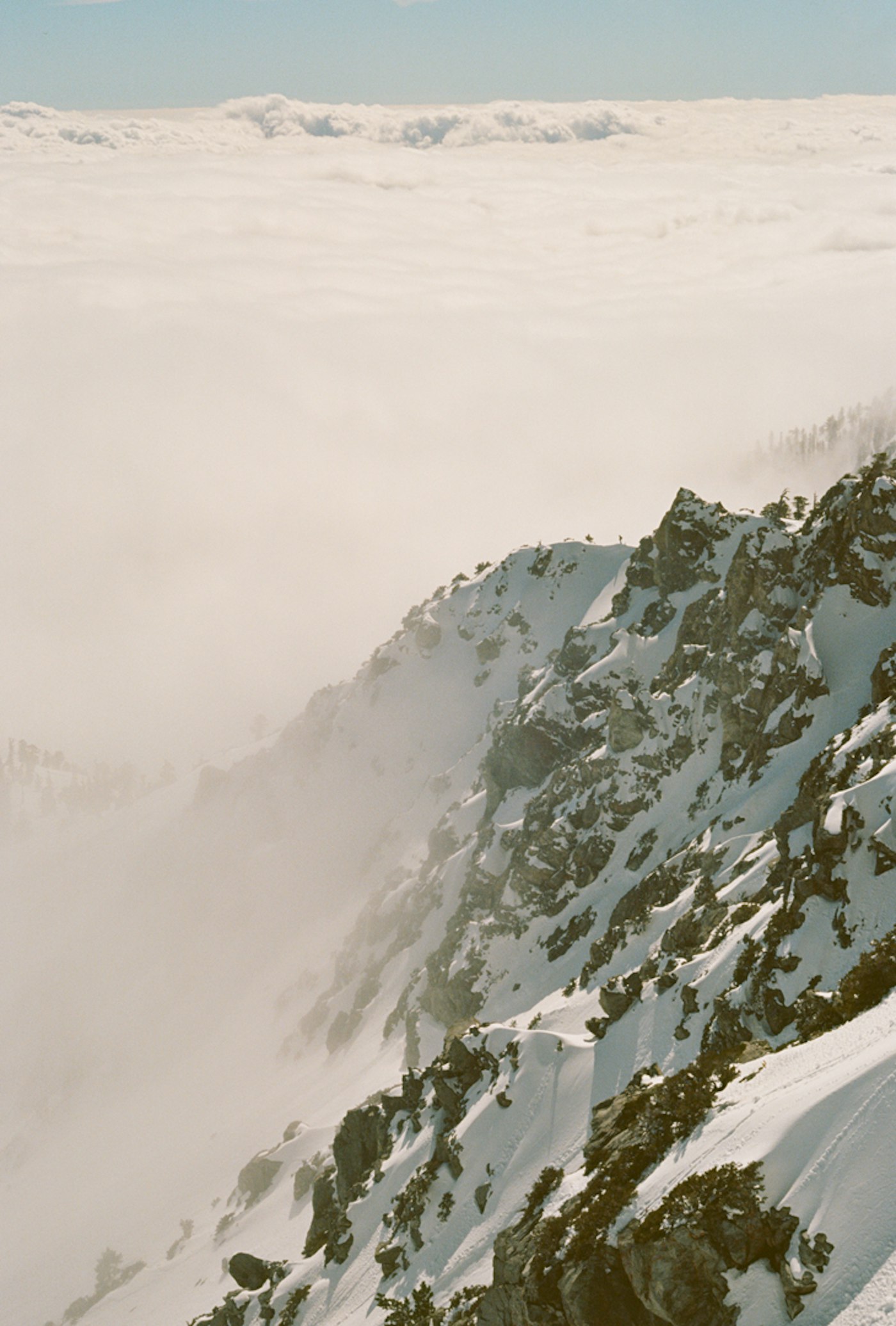
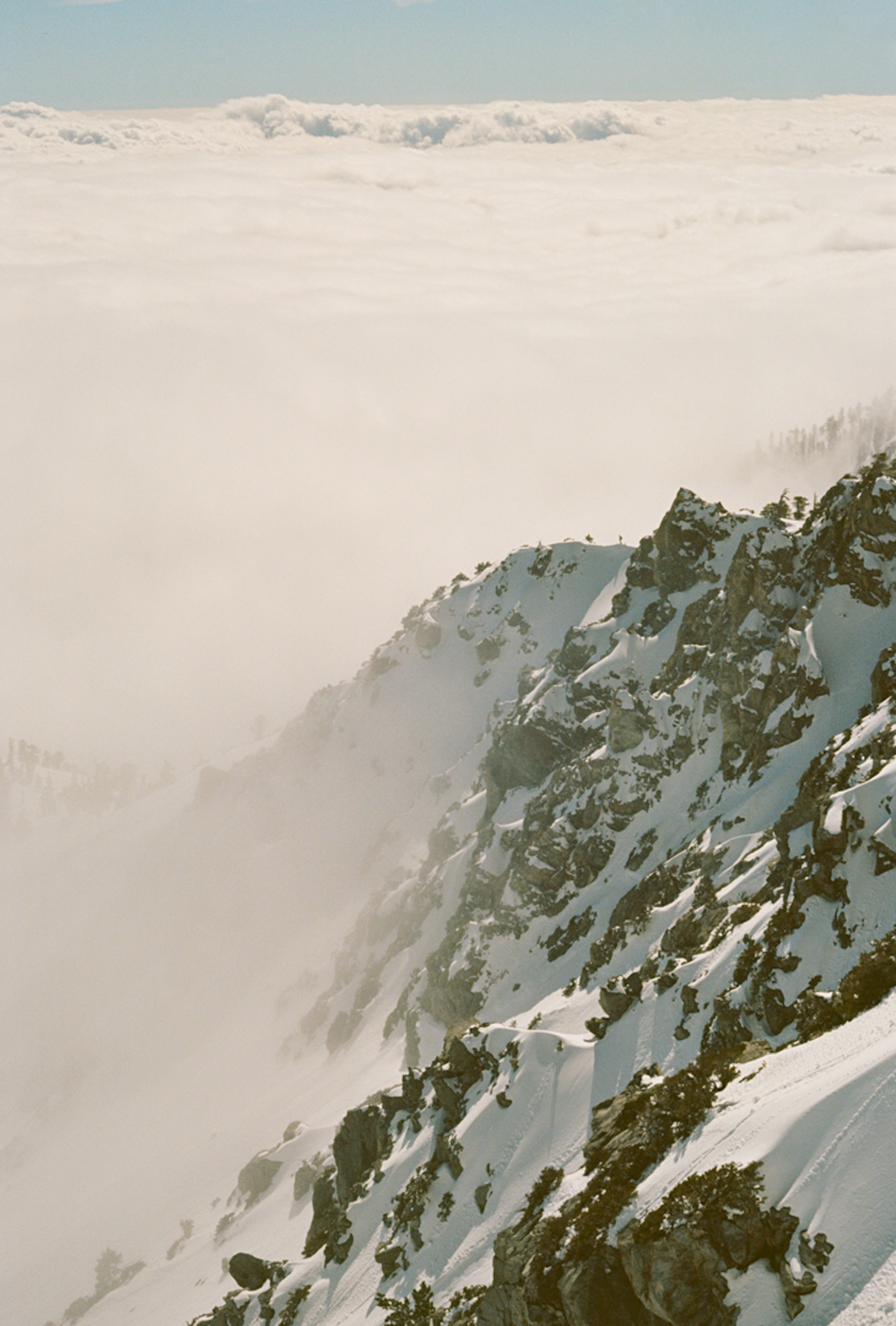

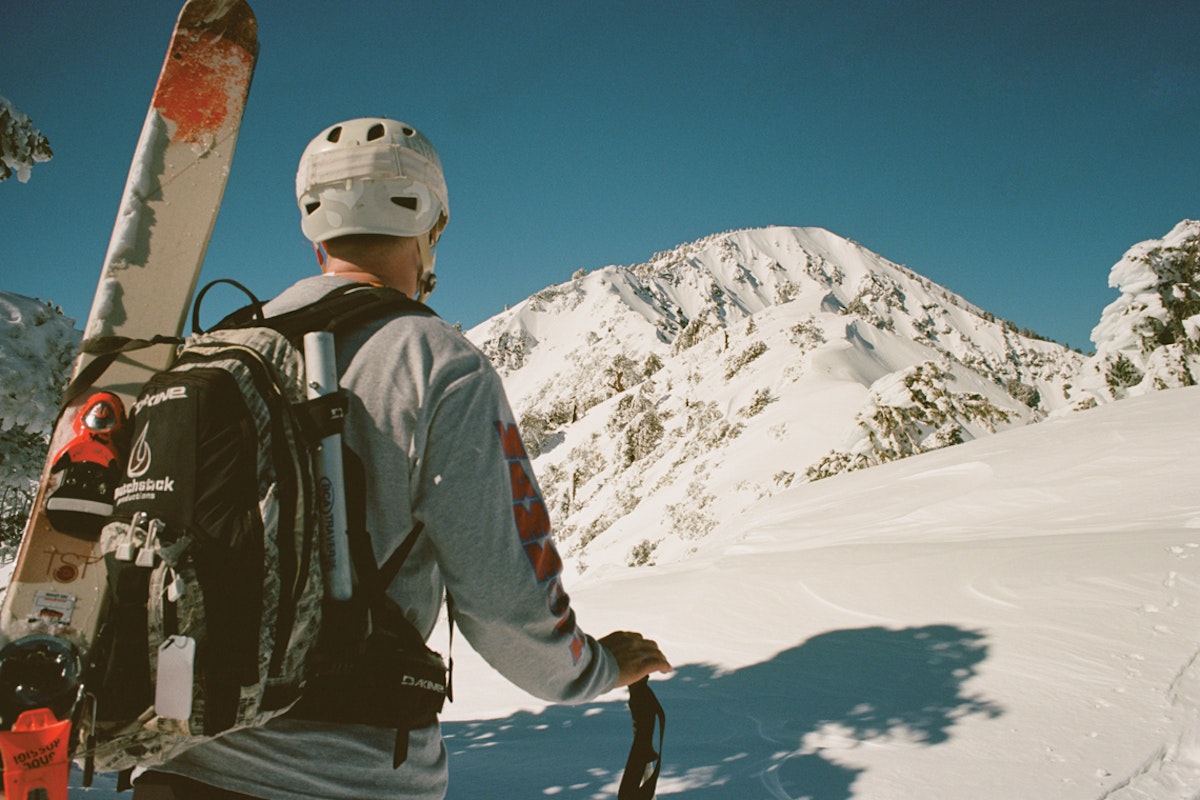
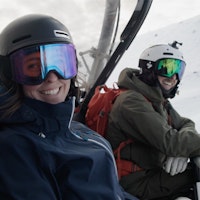
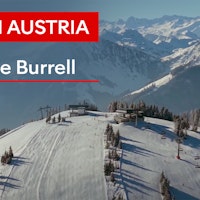
![[GIVEAWAY] Win a Head-to-Toe Ski Setup from IFSA](https://www.datocms-assets.com/163516/1765920344-ifsa.jpg?w=200&h=200&fit=crop)
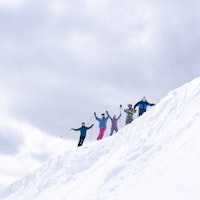
![[GIVEAWAY] Win a Legendary Ski Trip with Icelantic's Road to the Rocks](https://www.datocms-assets.com/163516/1765233064-r2r26_freeskier_leaderboard1.jpg?auto=format&w=400&h=300&fit=crop&crop=faces,entropy)
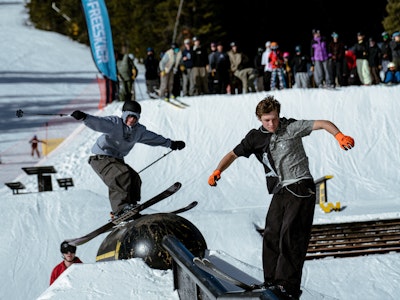
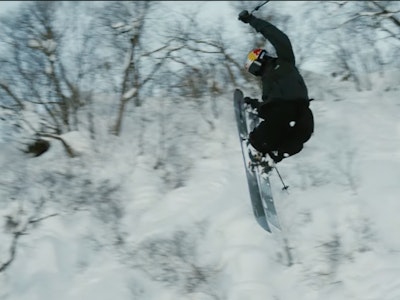

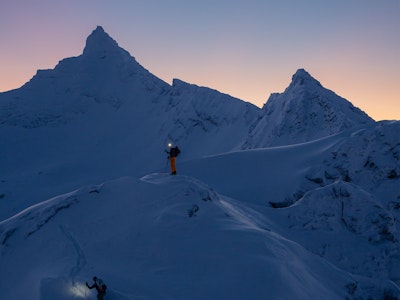
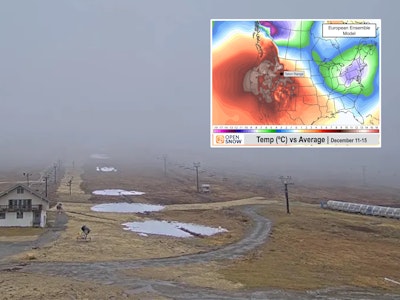
![[GIVEAWAY] Win a Head-to-Toe Ski Setup from IFSA](https://www.datocms-assets.com/163516/1765920344-ifsa.jpg?auto=format&w=400&h=300&fit=crop&crop=faces,entropy)
